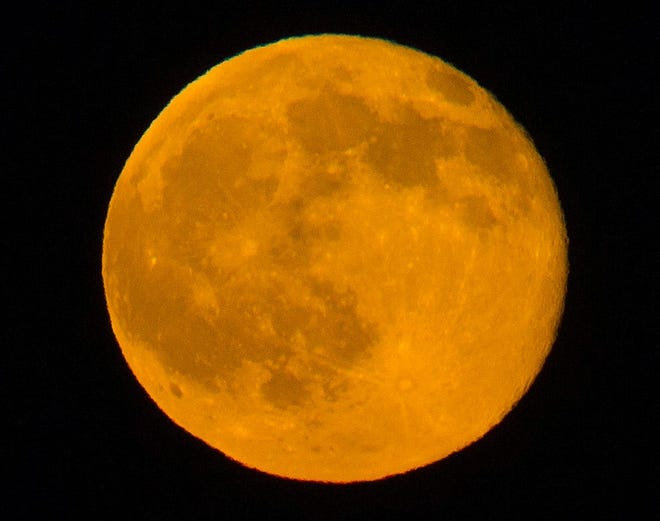June’s full moon will include several special treats for skywatchers: Not only will the moon be unusually low in the sky, it will also appear quite large and could even be rather colorful, astronomers say.
On Friday, June 21, the day after the summer solstice, the strawberry full moon will appear in the evening skies over America. Alas, it won’t look like a strawberry, and it probably won’t be red, astronomers say, although it may have a golden color.
Since the June 2024 full moon happens near the solstice, when the sun at its highest point of the year, this month’s full moon is the very lowest full moon, indeed, “the lowest we’ve seen in years,” the Old Farmer’s Almanac said. Because the moon is so low, it will appear bigger than ever. This is known as the “Moon Illusion.”
“On the evening of June 21 — just after sunset — look towards the southeast to watch the full moon rise gently above the horizon,” the Old Farmers Almanac recommends. “There, it will appear large and golden-hued.”
When is the full strawberry moon?
The strawberry moon – which this year is the first full moon of summer – will become full at 9:08 p.m. on Friday June 21. However, the moon will appear full for about three days around this time, from Thursday evening through Sunday morning, according to NASA’s Gordon Johnston.

Colorful, large, and low
The strawberry moon is the most colorful of the year because it takes a low, shallow path across the sky, said Bob Bonadurer, director of the Milwaukee Public Museum‘s planetarium.
As an added benefit, the low arc of the June full moon across the sky means moonlight must travel through more of the Earth’s atmosphere, which often gives it an orange or yellow tint.
According to NASA, this will also be the lowest full moon of the year (reaching only 21.9 degrees above the southern horizon Saturday morning at 1:20 a.m.).
Why is it called the strawberry moon?
June’s full moon has traditionally been nicknamed the strawberry moon, but don’t be deceived by the name: Its origin has nothing to do with the moon’s hue or appearance, according to the Almanac.
Native American Algonquin tribes inhabiting the northeastern U.S. – along with the Ojibwe, Dakota and Lakota peoples – have used the strawberry moon to mark the time for gathering ripened June-bearing strawberries, the almanac said.
The Maine Farmer’s Almanac started publishing Native American names for full moons in the 1930s, according to NASA.
Other European names for June’s full moon are the mead or honey moon, and the rose moon.


